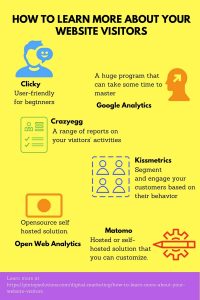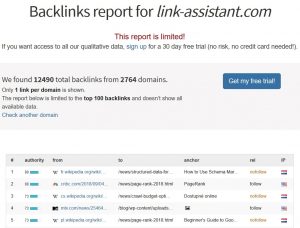 Is your website optimized for conversions?
Is your website optimized for conversions?
That’s something of a trick question. While there’s no question that certain websites are literal conversion machines, true optimization is technically impossible. The most effective marketers continue to refine, improve, test, and iterate to infinity.
If you’ve already covered the conversion basics, such as including a high number of landing pages and high-quality content offers on your website, there’s still quite a bit more you can do to increase your lead generation. Below you’ll find 10 bright ideas for conversion optimization, without major investment of time or resources:
1. Implement A/B Testing
Are your website’s current conversion rates due to a failure to simplify your design? Is it a matter of load time optimization, or is it another factor? Implementing A/B testing is the most measurable way of identify exactly what your site needs to convert and why. This is simple using a marketing software or one with focused testing functionalities, like HubSpot or Unbounce.
2. Pick One Conversion Objective Per Page
Every page on your website needs to have a single strategy objective. That’s not to say you can’t have multiple calls-to-action on certain site pages, such as your homepage. However, each page on your site should have a primary conversion objective. It might be downloading an eBook, signing up for a free trial, or subscribing to your blog.
Selecting a focused conversion purpose allows you to optimize your page around a single CTA, and direct the visitor to engaging in that single action.
3. Welcome Visitors
If your loyal customers visit your website, using marketing software with personalization capabilities allows you to greet them by name. For first-time visitors, welcome them by source such as “LinkedIn.” Too much personalization can be disturbing, but just enough shows your visitors that you’re paying attention and care.
4. Make Page Purposes Clear
Your chances of conversion – and creating sticky pages – are much lower if your pages carry clear intent. A user should never be confused whether they’ve clicked on a list of your brand’s content resources or blog, or whether you’re offering a free 30-day trial or reduced rate on their first three months of service.
Pages with a clear purpose often have an exceptionally descriptive header tag, concise text, and design that directs towards a single call-to-action button.
5. Eliminate Navigation from Landing Pages
One of the simplest ways to optimize for conversions is to eliminate the navigation bar from each and everyone of your landing pages. This conversion best practice is recommended and implemented by many marketing experts, including the team at HubSpot and Chris Brogan.
6. Include Trust Signals Throughout the Site
Does your site include the official logo of your payment gateway? Logos in the footer to show your visitors that you are BBB-accredited? Have you taken the time to purchase and install an SSL certificate for site security? Trust signals are a critical factor for conversion, especially if your buyer personas are relatively savvy.
7. Integrate Social Proof
If your current clients are satisfied with your product, share this throughout your website. Social proof and testimonials can significantly enhance the legitimacy of your website and conversion rates. Whenever possible, utilize client logos, headshots, and statistics to put some credibility behind your social proof:
- 9 out of 10 of our clients would recommend us to a friend
- Join the 70,000 marketing pros who subscribe to our blog!
- Read about how our product helped Tom of Acme Industries
8. Never Be Ambiguous
You might feel like it’s abundantly clear that your landing page is centered around a case study, but your website visitors might not agree. When you take the behavior of today’s rushed consumers into account, you’ll be even more amazed at just how clear your landing pages need to be.
If you’re unsure how effectively you’ve eliminated ambiguity and showcased your offers on your landing pages, engage in 3rd-party testing. Honest feedback from fresh eyes, especially individuals who can use websites like your ideal customers, is the best litmus test.
9. Consider a Parting Call-to-Action
When your first-time visitors leave your website, they might not return. Offering a final, parting call-to-action via a popup can be a powerful way to collect any final conversion opportunities that are left on the table. Alternatively, consider special deals and coupons to combat cart abandons or individuals who quit part-way through trial signup processes.
10. Consider Retargeting
Retargeting is really in it’s infancy stages, but there’s little question that it’s the conversion optimization methodology of the future. It’s about personalized content recommendations, much like the algorithm that helped shape Amazon.com into it’s current status as an Commerce giant.
When visitors return to your website, offer conversion opportunities, deals, and content offers that are a logical progression from their last interaction with your brand. If they downloaded a whitepaper, perhaps they’re ready to read a case study. Individuals who’ve been engaged for a while and reviewing product comparison sheets might want a consultation with sales. Retargeting allows you to showcase your best and most relevant content opportunities to prospects, exactly when they want to see them.
Have you done any of these intermediate or advanced conversion optimization actions? Why or why not?
image credit: images money/flickr cc
(159)








